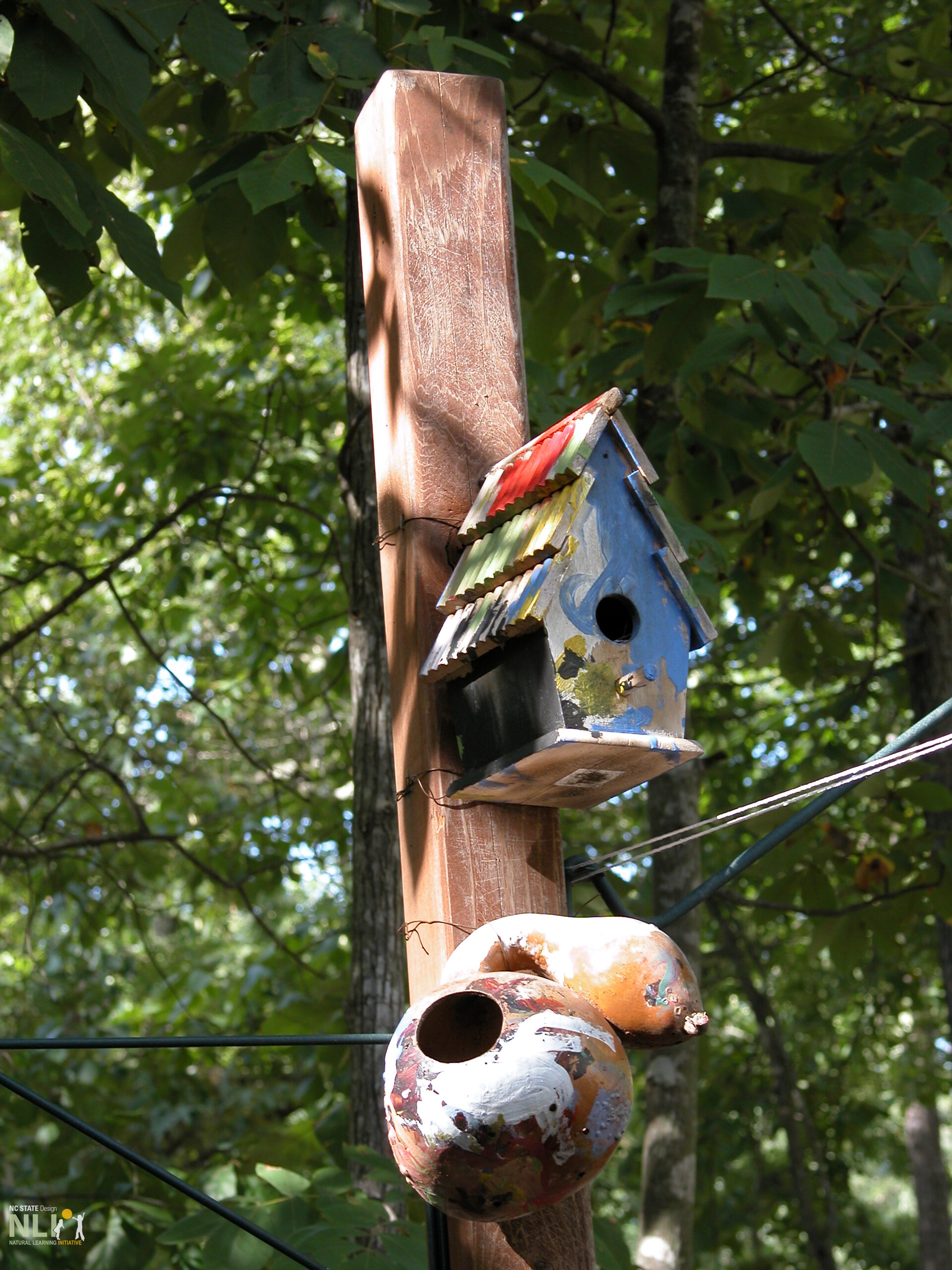Birds and Bird Habitat
Science Knowledge & Skills refers to the emerging ability to gather information about the natural and physical world and organize that information into knowledge and theories. Young children are often called natural scientists. Their inclination to be curious, explore, ask questions, and develop their own theories about how the world works make science an important domain for enhancing learning and school readiness. It provides opportunities for rich vocabulary learning. It fosters a sense of curiosity and motivation to learn.
Approaches to Learning refers to observable behaviors that indicate ways children become engaged in learning. Children’s ability to stay focused, interested, and engaged in experiences supports a range of positive outcomes, including cognitive and language development important to later learning. Many early learning experts view approaches to learning as one of the most important domains of early childhood development.
Setting:
Bird House Station
Focus:
Learning about Bird Life and Habitats
Curricular Areas:
- Science Knowledge and Skills: observation, organizing observations into knowledge and theories
- Conceptual Knowledge of Natural and Physical World
- Physical Development: climbing, balance, motor control, muscle development
- Language Development: Receptive and Expressive
Approaches to Learning: initiative and curiosity, focus and engagement
Suggestions:
- Post pictures o different colored birds in the indoor classroom at children’s eye level.
- Place bird books in the indoor book center.
- Use the name of the bird when calling attention to the pictures (e.g. the yellow bird is called a canary; the blue bird is called a blue jay, etc.)
- Encourage children to climb fence ladders to observe the inside of the birdhouse under teacher supervision.
- Model for children curiosity, observation, inquiry, investigation, wondering, and reflecting in the outdoor environment.
- Demonstrate for children how to use binoculars.
- Allow children to place small amounts of birdseed on the balcony just outside the birdhouse.
- Ask what children are seeing and observing.
- Respond to children’s questions about their observations.
- Encourage children’s natural inclination to wonder and ask questions.
- Take photos of children observing birds and post at their eye level in the indoor classroom.
- Encourage children to draw or represent what they see by drawing or painting on the fence easel.
Note: For infants and non-mobile children, place mats or quilts near the fence and birdhouses so that they can observe bird activity.
Engaging Parents:
- Invite parents to come and participate in the observation experience with the children.
- Send home an information sheet with bird pictures and names.
Materials & Tools
- Several bird houses attached to 4’ poles just outside the chain link fence
- Bird seed
- Perpendicular ladders attached to the chain link fence that allows children to climb and observe inside of bird house
- Fence easels
- Binoculars


